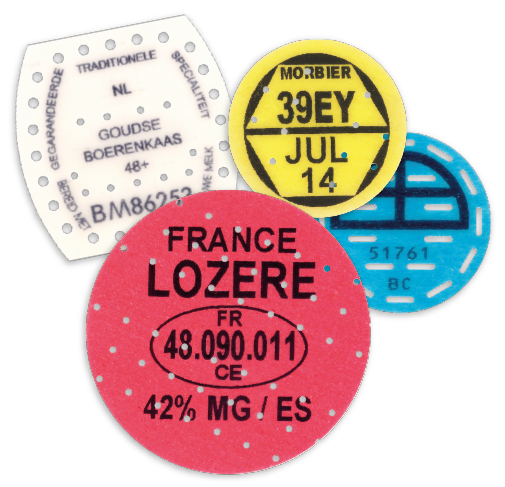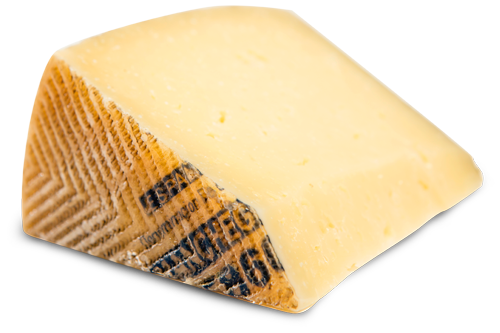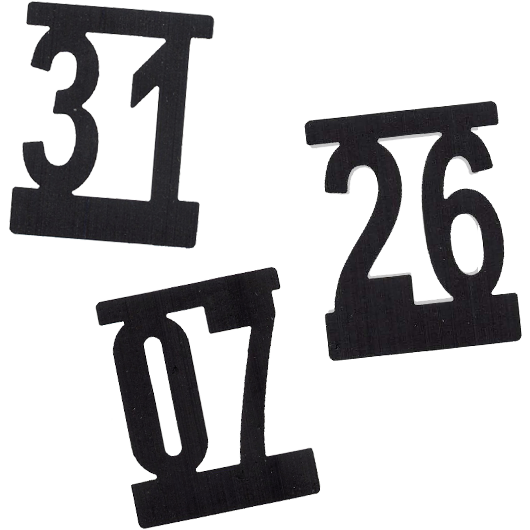


Whether made from 100% casein or mixed with glycerol, all of our marks and inks are fully food-grade and meet the strictest legal requirements. Our organization holds all relevant certifications, including HACCP.
Casein, a milk protein, comes as a powder. It is mixed with water and possibly a coloring agent and glycerol. Subsequently, a film is rolled or pressed from which in a controlled hygienic process the marks are punched, perforated and printed with their own pattern and encoding. The substance takes on water quite slowly, which prevents the marks from sticking together. Perforations ensure that moisture does not accumulate under the cheesemark and so support the adhesion.

After drying, marks are packed per unit and distributed. Delivery is documented accurately, so there can be no doubt which client received which marks. A large variety of shapes in combination with a number/letter code together, text and possibly a logo makes each mark - and so each cheese - unique. Due to the special composition of the ink and the extremely low amount per piece our cheesemarks can be safely put in contact with cheese. This creates a unique, edible identifier: easy to apply, affordable and fraud proof.


The code on the cheesemark, a consecutive string of numbers usually in combination with one or more letters, identifies each individual cheese. The code can be linked to essential information such as raw materials, moisture and salt content, size and weight. The cheesemark allows for an exact determination of where and when the cheese is produced. The code is legible throughout the production process, even after brining and coating, and through the distribution chain - up to the cutting stage.
David Margeric, Director Matec

An original cheesemark is the guarantee that a product has certain characteristics, that it complies with legal requirements and meets the consumers’ expectations. By adding the mark to the cheese at the earliest production stage, it becomes an integral part of the product. Once applied, the mark cannot be removed without leaving a trace. This makes the cheesemark an essential ‘certificate of authenticity’ which you cannot do without.